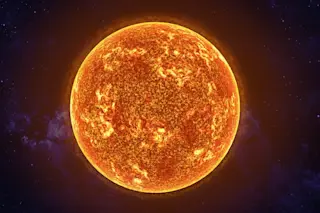Comet Ison streaks toward the sun and emerges from its encounter as not much more than a ball of dust. (Source: NASA/STEREO) |Update 10:30 a.m. 11/29/13: As I noted in my first update immediately below, Comet ISON seems to be showing new signs of life. I'm now working on a new post about that. I should be able to publish it by the end of the day, so please check back. In the meantime, a mea culpa: On its closest approach to the sun, ISON really did not seem to have a pulse — but I should have waited before declaring it dead. Although scientists were indeed speaking as if it had met its demise, I should have waited for a more definitive assessment. There is also one other intriguing possibility: Comet ISON may be alive and dead at the same time. For an explanation of that, please come back ...
Death of Comet ISON Captured by NASA's STEREO Spacecraft. Or Maybe Not!
Witness the journey of Comet ISON as it approaches the sun and faces its fate, captured vividly by NASA's STEREO spacecraft.
More on Discover
Stay Curious
SubscribeTo The Magazine
Save up to 40% off the cover price when you subscribe to Discover magazine.
Subscribe












